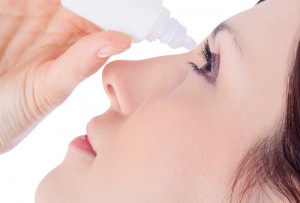Dry Eye SyndromeTreatment
How is dry eye syndrome treated?
 Depending on the causes of dry eye syndrome, your doctor may use various approaches to relieve the symptoms.
Depending on the causes of dry eye syndrome, your doctor may use various approaches to relieve the symptoms.
Dry eye syndrome can be managed as an ongoing condition. The first priority is to determine if a disease is the underlying cause of the dry eye syndrome (such as Sjögren’s syndrome or lacrimal and meibomian gland dysfunction). If it is, then the underlying disease needs to be treated.
Cyclosporine, an anti-inflammatory medication, is the only prescription drug available to treat dry eye syndrome. It decreases corneal damage, increases basic tear production, and reduces symptoms of dry eye syndrome. It may take three to six months of twice-a-day dosages for the medication to work. In some cases of severe dry eye syndrome, short term use of corticosteroid eye drops that decrease inflammation is required.
If dry eye syndrome results from taking a medication, your doctor may recommend switching to a medication that does not cause the dry eye side effect.
If contact lens wear is the problem, your eye care practitioner may recommend another type of lens or reducing the number of hours you wear your lenses. In the case of severe dry eye, your eye care professional may advise you not to wear contact lenses at all.
Another option is to plug the drainage holes, small circular openings at the inner corners of the eyelids where tears drain from the eye into the nose. Lacrimal plugs, also called punctal plugs, can be inserted painlessly by an eye care professional. The patient usually does not feel them. These plugs are made of silicone or collagen, are reversible, and are a temporary measure. In severe cases, permanent plugs may be considered.
In some cases, a simple surgery, called punctal cautery, is recommended to permanently close the drainage holes. The procedure helps keep the limited volume of tears on the eye for a longer period of time.
In some patients with dry eye syndrome, supplements or dietary sources (such as tuna fish) of omega-3 fatty acids (especially DHA and EPA) may decrease symptoms of irritation. The use and dosage of nutritional supplements and vitamins should be discussed with your primary medical doctor.
What can I do to help myself?
Use artificial tears, gels, gel inserts, and ointments – available over the counter – as the first line of therapy. They offer temporary relief and provide an important replacement of naturally produced tears in patients with aqueous tear deficiency. Avoid artificial tears with preservatives if you need to apply them more than four times a day or preparations with chemicals that cause blood vessels to constrict.
Wearing glasses or sunglasses that fit close to the face (wrap around shades) or that have side shields can help slow tear evaporation from the eye surfaces. Indoors, an air cleaner to filter dust and other particles helps prevent dry eyes. A humidifier also may help by adding moisture to the air.
Avoid dry conditions and allow your eyes to rest when performing activities that require you to use your eyes for long periods of time. Instill lubricating eye drops while performing these tasks.


